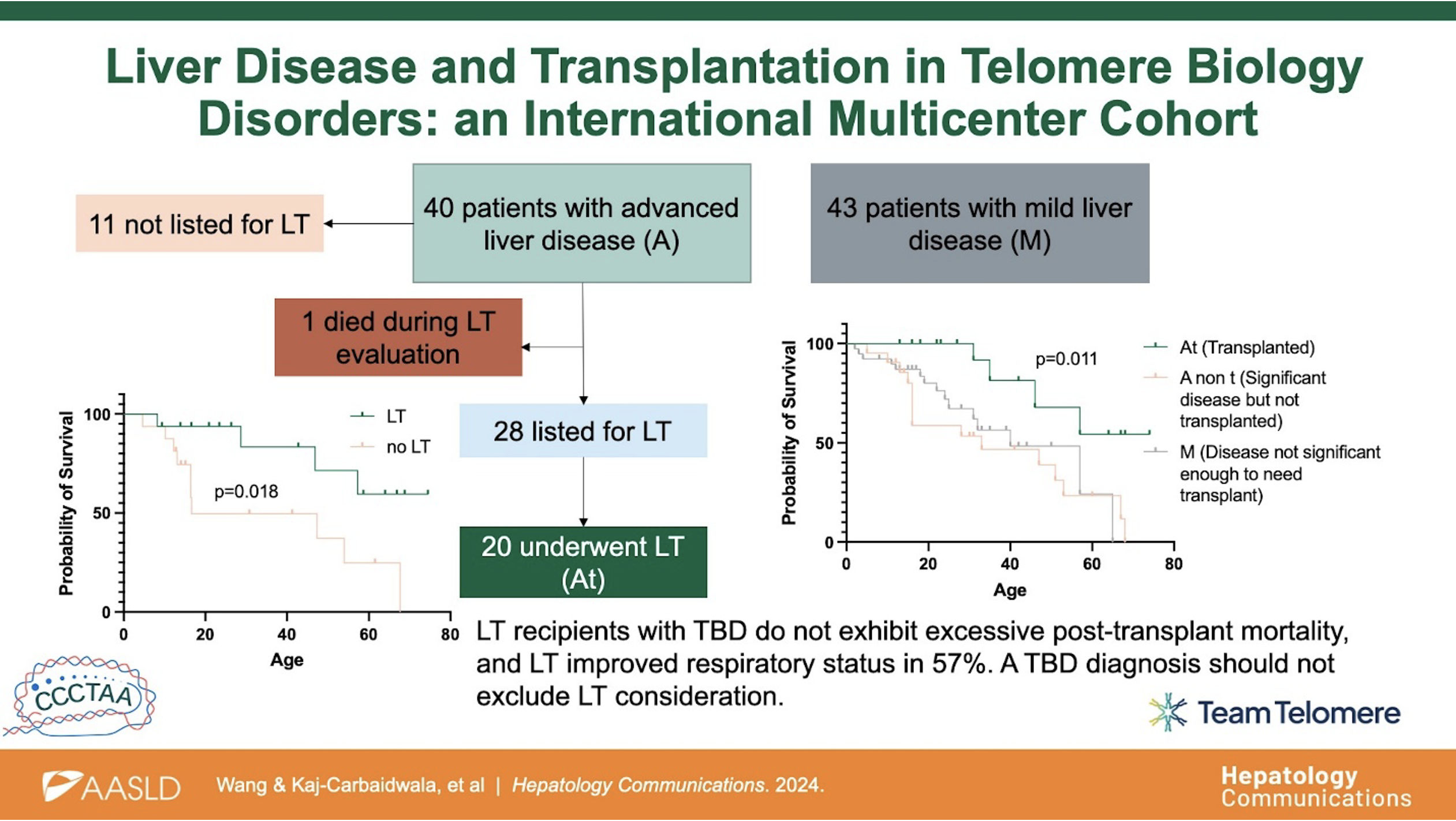Drs. YunZu Michele Wang of Cincinnati Children’s Hospital and Dr. Batul Kaj-Carbaidwala of Lurie Children’s Hospital Chicago worked with the Team Telomere family group and 16 other institutions across North America in the Clinical Care Consortium for Telomere-Associated Ailments (CCCTAA) to collect and report data on 83 patients with telomere biology disorders (TBD) like Dyskeratosis congenita (DC), who also have liver disease.
The study idea initially came about several years ago when Drs Wang and Kaj-Carbaidwala met patients with TBDs and liver disease and noted that there was little information out there about what to do next. They recall two patients – one who is sadly no longer with us but who taught them a lot about the liver complications in TBD, and another, who was able to receive a transplant and is now doing extremely well. These experiences prompted them, along with their mentors Dr Kas Myers and Dr Alex Miethke (both at Cincinnati Children’s) to try to understand this disease better for the sake of patients everywhere.
By studying the course of disease and liver transplant outcomes in this group, the study aims to improve the clinical understanding of the risks and benefits of liver transplantation in this unique group; this has not previously been looked at on such a large scale, and so has not been well understood.
Until now! Initial findings suggest that among patients who received a liver transplant, several experienced fewer GI bleeds, fewer blood transfusions, and lower supplemental oxygen requirements, representing huge improvement in quality of life. These findings also indicate that the benefit of liver transplant in TBDs may go beyond liver function and could positively impact other aspects of the patient’s health, such as lung function.
The authors advocate for patients with TBDs to be considered for liver transplant if exhibiting signs and symptoms of advanced liver disease. It has also been noted that in any patient with TBD and enlarged spleen, early referral to a liver specialist for evaluation is warranted. Perhaps most importantly, the study showed that patients with TBD do similarly well as patients without TBD after liver transplant, and that a diagnosis of TBD does not necessarily increase risk of complications from liver transplant.
It is of course important to remember that each patient’s case should be reviewed individually, and that the best treatment course may not be the same for every patient with TBD and liver disease. However, the authors do feel that we no longer should think of TBD as a reason not to offer transplantation.
This data has been published in the journal “Hepatology Communications” which is widely read by liver specialists at centers offering liver transplantation. It is hoped that as more information is shared about patients with TBD and liver disease, we will continue to learn more about how best to help our patients.

The infographic above, which was also published in Hepatology Communications, summarizes the main findings of the study.
